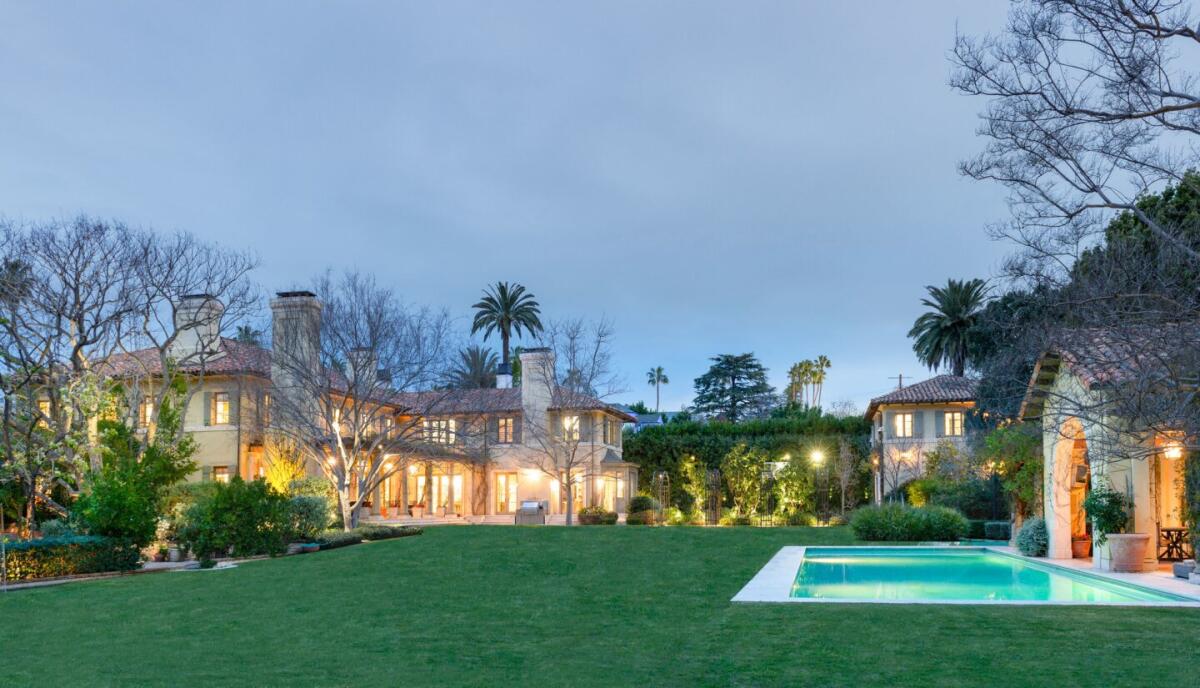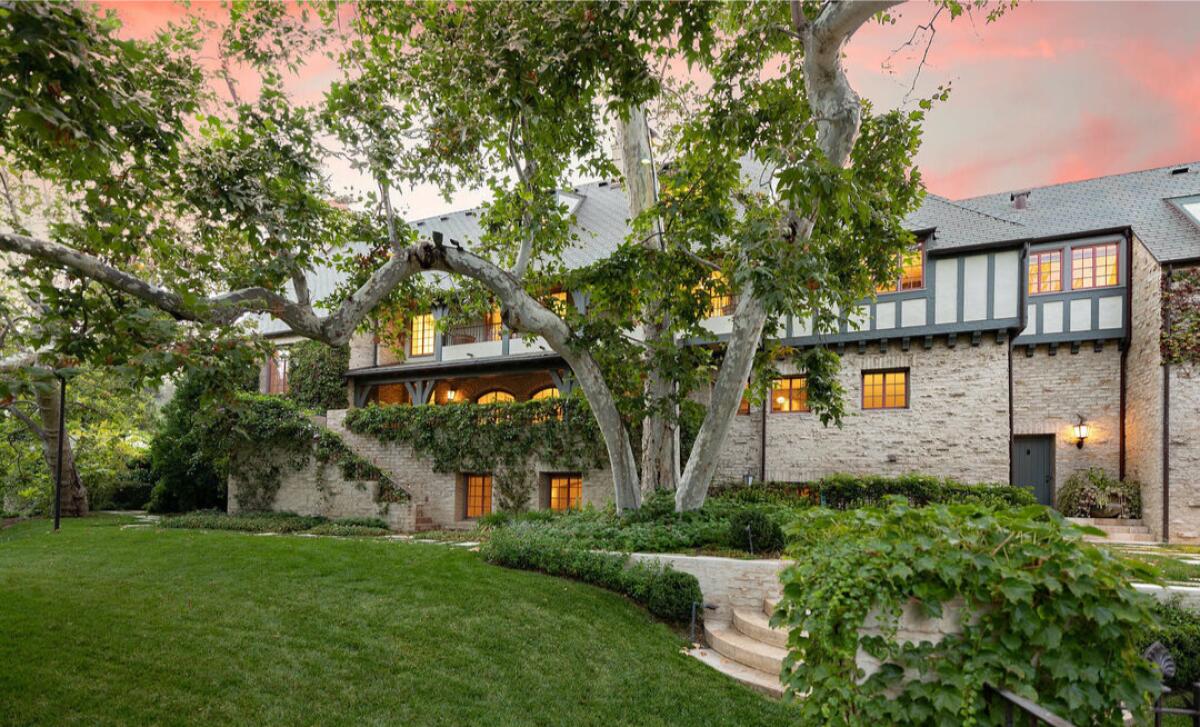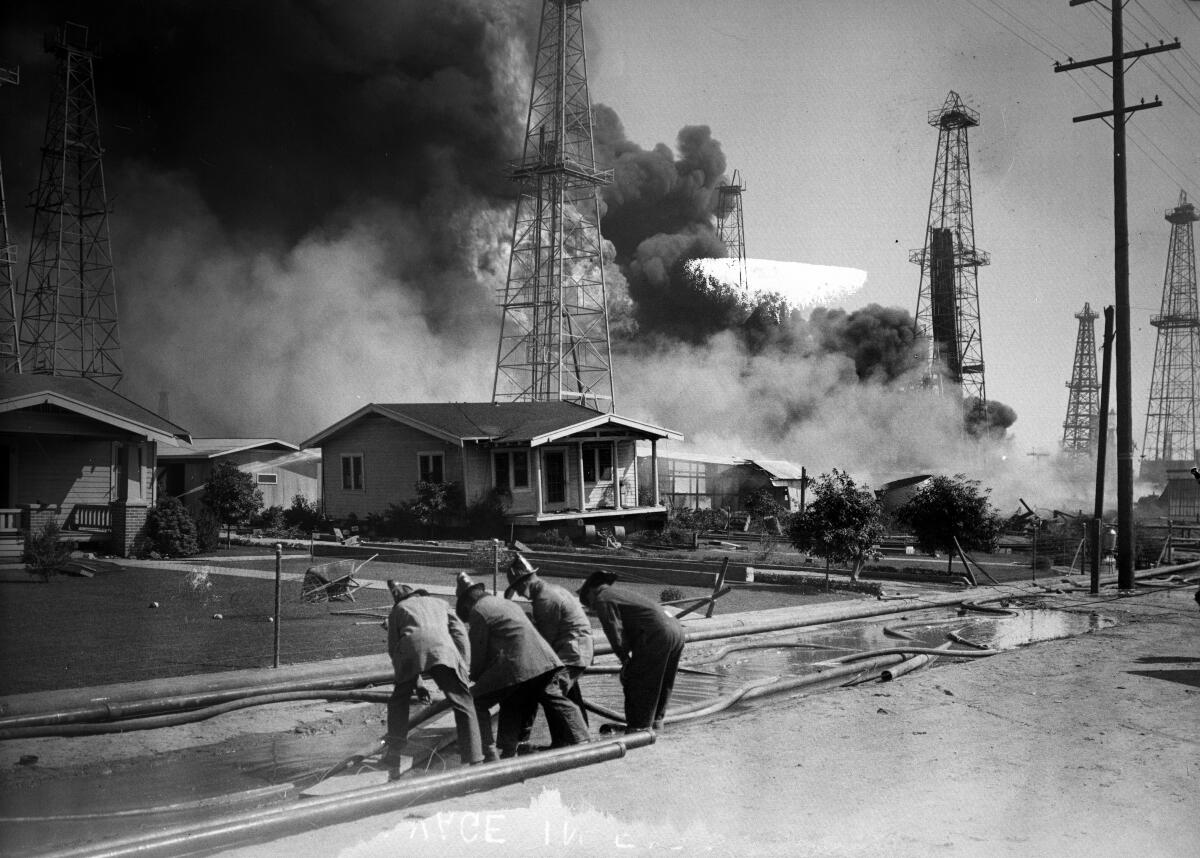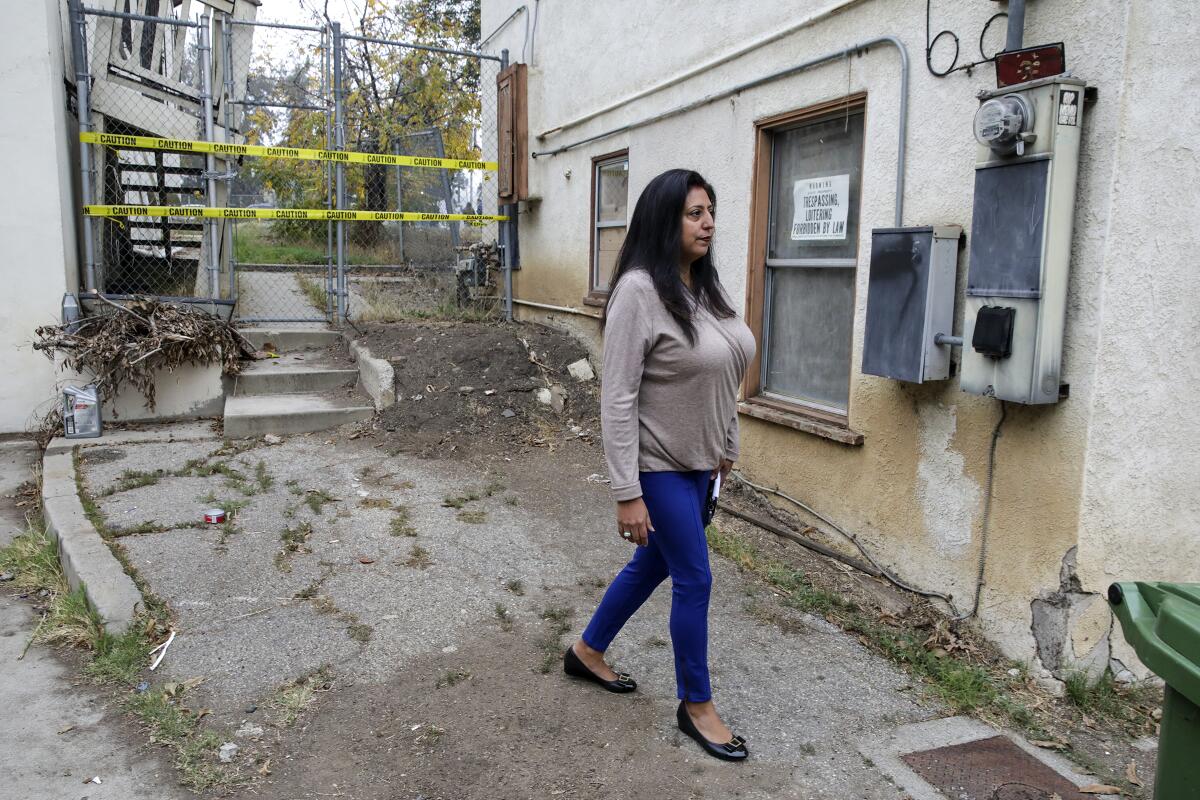Real Estate newsletter: Famous cannabis farmer makes $30 million

- Share via
Welcome back to the Real Estate newsletter. December usually marks a slowdown for Southern California’s luxury market, as home buyers turn their focus to traveling and gift shopping around the holidays, but this week brought the most interesting trio of sellers in recent memory.
The first is Jim Belushi, actor-turned-weed-farmer, who passed along his Brentwood mansion for $30 million after four years and eight listings. The actor of “According to Jim” fame has since moved to Oregon, where he’s running a commercial cannabis operation that recently starred in its own Discovery Channel show.
The second is Taylor Thomson, who listed her Tudor-style estate in Bel-Air for $43 million a few months after dropping more than $48 million on the Pacific Palisades compound of Vice co-founder Shane Smith. Not that she really needs the money; the Bloomberg Billionaires Index ranks Thomson as the world’s 282nd-richest person thanks to her sizable stake in the media conglomerate Thomson Reuters.
Fun fact: When the original article published late last week, her net worth was $8.85 billion. On Thursday, it was $9.02 billion.
The third is UC San Diego, which is shopping around the coastal home of famed oceanographer Walter Munk. Munk, nicknamed “Einstein of the Oceans” after years of research on wind and waves at the university, donated the striking estate to the school in 2014 and died in 2019. After getting it listed on the National Register of Historic Places, the school listed it for $5.5 million.
We also have a history lesson from my colleague Rachel Schnalzer, who sought to answer this question from an L.A. Times reader: How did the oil industry play a role in attracting people to Los Angeles at the turn of the 20th century? The drama unfolds like a parallel Hollywood story and has plenty to say about fortune, greed and the American dream.
There’s also an update on the abandoned 710 Freeway project. California transportation officials seized hundreds of properties for development before political pushback from wealthier communities stopped the highway dead in its tracks, leaving a 4.5-mile gap between Alhambra and Pasadena. Now, L.A. leaders have unveiled a proposal that would replace the decaying homes and empty lots with new parks and housing.
While catching up on the latest, visit and like our Facebook page, where you can find real estate stories and updates throughout the week.
High price for weed farmer

In Brentwood’s third-priciest home sale of the year, actor-turned-cannabis-farmer Jim Belushi has unloaded his Mediterranean-style mansion for $30 million.
The deal marks the end of a four-year effort that saw Belushi — “Saturday Night Live” alum and star of the sitcom “According to Jim” — list the home eight times. He first sought $38.5 million in 2017, and two years later, he dropped the price down to $28 million.
The sale comes as no surprise, as he’s since moved to Eagle Point, Ore., where he runs a cannabis farm. Discovery Channel documented the operation in the 2020 series “Growing Belushi.”
Heiress eyes another fortune

Taylor Thomson, the publishing heiress whom Bloomberg ranks as the 282nd-richest person in the world, has listed her Tudor-style mansion in Bel-Air for $43 million.
In terms of profit, the listing is about as ambitious as they come. If she gets her price, it’ll be nearly six times the $7.4 million she paid for the historic estate two decades ago.
Thomson picked up a place in Pacific Palisades this year, dropping $48.67 million on Vice co-founder Shane Smith’s Mediterranean-style compound in a deal that set a record for the coastal community. Her family owns Woodbridge Co., which holds a majority share of the media conglomerate Thomson Reuters.
UC San Diego tries to cash in donated home

On the coast of La Jolla, UC San Diego has listed Seiche, a striking compound built and owned for 60 years by oceanographer Walter Munk. Asking price: $5.5 million.
Munk — who died in 2019 at 101 — was a scientist and explorer known for his research on wind and waves at UCSD’s Scripps Institution of Oceanography, which eventually earned him the nickname “Einstein of the Oceans.” He built the home in 1953 and donated it to the school in 2014. A seiche is a standing wave in a body of water.
Found just across the street from UCSD’s campus, the property includes a main house, guesthouse and small amphitheater overlooking the ocean. It was listed on the National Register of Historic Places in July, and later that month, the school announced its intention to sell it.
Midcentury in style, the residence features open-concept spaces lined with wood beams and steel-framed windows looking toward the coast. A sunlit foyer kicks things off, leading to a wood-covered kitchen and scenic dining room.
The impact of L.A.’s oil boom

Imagine Los Angeles in the 1920s. What do you see? Many people conjure visions of the fledgling film industry, populated with actors such as Charles Chaplin and Greta Garbo and Hollywood hopefuls arriving in droves, writes Rachel Schnalzer.
Although the movie business certainly played a role in Los Angeles’ development during the 20th century, the oil industry also spurred the growth of what is now the second-largest city in the United States.
“Oil, motion pictures and real estate were like the trifecta of forces that were attracting migrants to come west to L.A.,” said Becky Nicolaides, a research affiliate at USC and UCLA. “Oil was kind of right up there with the glamour of Hollywood.”
Edward Doheny wasn’t the first to find oil in the Golden State. But his 1892 oil strike in Los Angeles set in motion a spurt of economic and population growth, along with pollution and environmental devastation.
It would take roughly a quarter of a century for the oil boom to reach a fever pitch.
New proposal for abandoned freeway

Six decades after California transportation officials began seizing hundreds of properties for a freeway project that never panned out, Los Angeles leaders have unveiled a proposal to replace the decaying vacant homes and dirt-filled lots in the El Sereno neighborhood with new parks and housing, writes Liam Dillon.
If the plan comes to fruition, it would be a major step forward in the saga involving the curtailed 710 Freeway, which hit a wall of opposition before it could stretch into wealthier communities.
The Eastside neighborhood has long borne the most visible and lasting scars of the abandoned project, with a high concentration of derelict homes left in its wake. As the COVID-19 pandemic hit, activists repeatedly tried to take over vacant homes in a reaction to the region’s affordable housing crisis.
What we’re reading
An eyesore is up for grabs on the East Coast, where a row house dubbed “the ugliest building in Queens” is on the market for $3.6 million. The tile, Lego-like façade is so brutal that the house won a “Frank Lloyd Crap” award. New York Post has the details.
In competitive markets, real estate agents will try just about anything to get an edge, and many are finding huge success on TikTok. According to CNN, agents flocked to the social media app as a way to safely show homes to prospective buyers during the pandemic, and some now use it for 100% of their business.
Inside the business of entertainment
The Wide Shot brings you news, analysis and insights on everything from streaming wars to production — and what it all means for the future.
You may occasionally receive promotional content from the Los Angeles Times.




